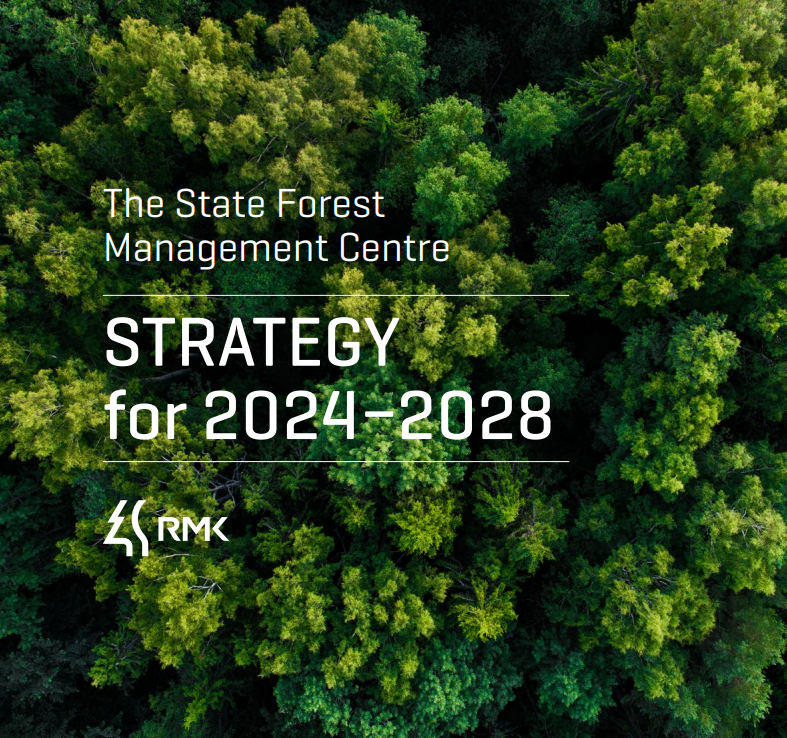Development plans and strategies
Our activities are based on the following framework documents:
- RMK Development for 2024–2028 (6.42 MB, pdf)
- RMK’s Timber Marketing Strategy
The main objectives of RMK’s Strategy for 2024-2028 are as follows:

- Discontinuing regeneration cutting in limited management zones of protected areas
- Developing a system for assessing the ecological status of landscapes
- Increasing the share of mixed forests (dominant tree species at less than 80%)
- Developing a dispersion index for cutting, so that cutting in not concentrated in one region
- Diversifying our forest management practices – the cutting areas where shelterwood cutting and selection cutting are used, plus clear-cut areas of less than 1 hectare, will constitute at least 20 per cent of the total annual area of regeneration cutting.
- Introducing a methodology for assessing the added value of timber sold based on long-term contracts
- Independently assessing the annual allowable cut of RMK for 2026-2031 for its ecological and environmental impacts.
- Updating the drainage systems management strategy with the participation of stakeholders
- Restoring an additional 20,000 hectares of habitats (including former peat fields) and improving the status of 500 km of riverine habitats
- Supplementing drainage sites with environmental facilities on 60,000 hectares
- Launching a project for the optimal carbon storage of forests, i.e. determining which natural forest composition allows for the maximum sequestration of atmospheric carbon in forests and storing carbon in timber products
- Sequestering 2.9 million tonnes of CO2 annually in RMK’s forests and territories (net)
- Developing at least one additional profitable business line contributing to Estonia’s climate goals by 2028
- Developing and implementing a definition and model for CCF (continuous cover forestry)
- Continuing the forest tree breeding programme to identify trees with good heritable growth traits
- Nature education programmes having at least 48,000 participants per year
- Visitor infrastructure having at least 2.9 million visits annually
Previous development plans
- RMK Development Plan 2015–2020 (1.95 MB, pdf)
- RMK Development Plan 2011–2014 (2.38 MB, pdf)
- RMK Development Plan 2011–2014 supplement: Nature Conservation (2.11 MB, pdf)
- RMK Development Plan 2009–2012 (609.29 kB, pdf)